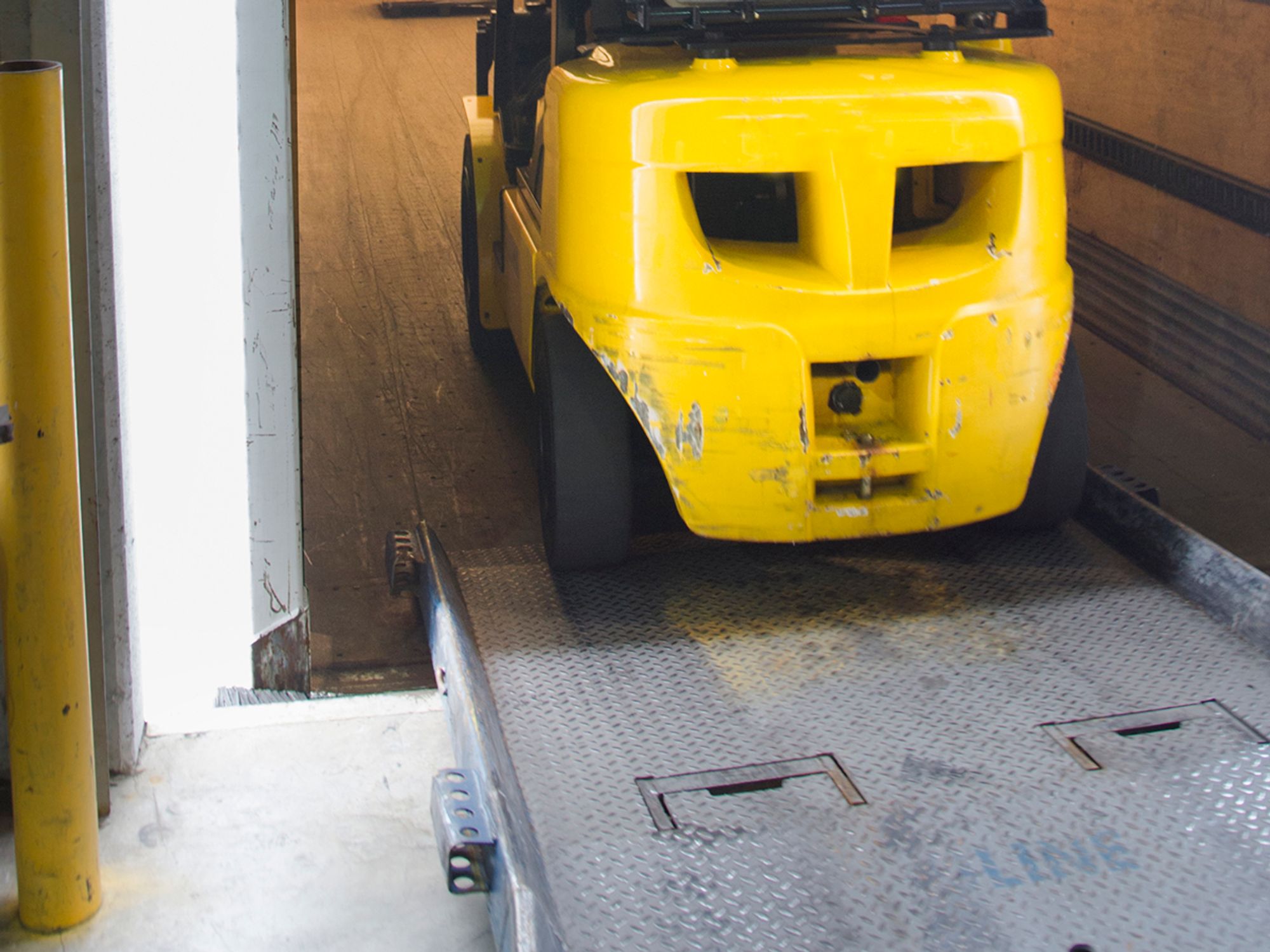Use dockboards safely

- Employers must ensure that any dockboards used are secure and free from risk of equipment runoff.
- Workers walking or standing on a dockboard need fall protection at heights of four feet or more above a lower level, if a risk of falling exists.
Dockboards and runoff protection
The Occupational Safety and Health Administration (OSHA) requires that dockboards (i.e., bridge plates) be provided with a means, such as edging or curbing, to prevent equipment from running off the edge. This is intended to protect employees from injury if equipment falls off the edge of the dockboard.
Any dockboards put into service after January 17, 2017, must have runoff protection or curbing unless the employer can demonstrate there is no potential for material handling equipment to fall off the dockboard.
A forklift that runs off the side of a dockboard could kill or injure employees working on or near it, even if the fall is less than four feet. In addition, workers using hand trucks to load and unload materials from a truck could fall if there is no runoff guard to prevent the hand truck from running off the side. Runoff protection on many dockboards is simply a lip on the side that is bent 90 degrees from the horizontal portion of the dockboard.
Employers do not have to use dockboards equipped with runoff guards if there is no fall hazard. However, OSHA does not specify what size opening constitutes a runoff hazard. Employers must evaluate whether a particular opening poses a hazard, considering factors such as the type and size of transfer vehicle the worker is using.
For example, if a semi-trailer is backed into a loading dock and the sides of the trailer are touching the padded area around the door, there is likely no potential for runoff, so the dockboard should not need runoff protection.
To ensure the safety of dockboards, employers must also:
- Ensure that dockboards can support the maximum intended load.
- Secure portable dockboards from moving while being used by employees.
- Ensure that portable dockboards have handholds or another means for safe transport.
- Prevent the accidental movement of transport vehicles while they are being used by employees.
Dockboards and fall protection
Workers walking or standing on a dockboard need fall protection (in the form of a railing system) at heights of four feet or more above a lower level. For example, if a dockboard is used to span a gap of several feet between a rail car and a platform, and employees walk across the dockboard, a railing system may be needed to protect against falls.
A guardrail system or handrails are not required when three conditions are met: (a) dockboards are used solely for materials-handling operations using motorized equipment; (b) employees engaged in these operations are not exposed to fall hazards greater than 10 feet; and (c) those employees have been trained under 1910.30.
